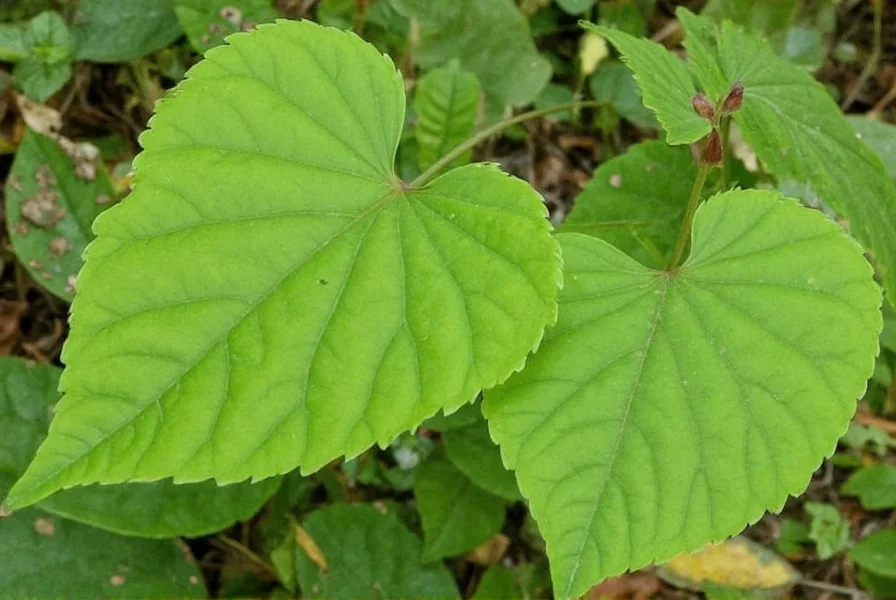When gardeners search for wild ginger mckenzie, they're typically seeking reliable information about this specific plant variety for landscaping or native gardening purposes. Unlike common misconceptions, Wild Ginger McKenzie isn't a separate species but rather a selected cultivar of Asarum canadense that exhibits desirable horticultural traits.
Botanical Classification and Origin
Wild Ginger McKenzie belongs to the Aristolochiaceae family and represents a cultivated selection of Asarum canadense, native to deciduous forests across eastern North America. This particular cultivar emerged from plant selection efforts focused on enhancing the natural qualities of the species. Unlike Asian ginger varieties (Zingiber officinale), wild ginger contains no culinary rhizomes and shouldn't be consumed due to the presence of aristolochic acids.
Distinctive Physical Characteristics
What sets Wild Ginger McKenzie apart from standard Asarum canadense includes:
- Leaf dimensions - Typically 3-5 inches across, about 20% larger than the species average
- Leaf texture - Noticeably glossier surface with deeper green coloration
- Growth habit - Forms denser mats through more vigorous rhizome production
- Flower characteristics - Produces the same maroon, ground-level flowers as the species, rarely visible beneath foliage
| Characteristic | Wild Ginger McKenzie | Standard Asarum canadense | Asarum europaeum |
|---|---|---|---|
| Leaf size | 3-5 inches | 2-4 inches | 2-3 inches |
| Leaf gloss | High | Moderate | Very high |
| Spread rate | Moderate-fast | Moderate | Slow |
| Hardiness zones | 4-8 | 4-8 | 5-9 |
Optimal Growing Conditions
Successful cultivation of wild ginger mckenzie care requirements centers around replicating its natural woodland habitat. This plant thrives in:
- Light conditions - Full to partial shade (less than 4 hours of direct sun)
- Soil requirements - Moist, well-draining soil rich in organic matter (pH 5.5-6.5)
- Water needs - Consistently moist but not waterlogged conditions
- Temperature tolerance - Performs best in USDA zones 4-8
Gardeners implementing wild ginger mckenzie companion plants strategies often pair it with ferns, trilliums, and other shade-loving natives. The plant establishes slowly the first year but typically forms a complete groundcover within 2-3 growing seasons. Unlike invasive groundcovers, Wild Ginger McKenzie spreads controllably through rhizomes without becoming problematic.
Ecological Value and Garden Applications
This native cultivar provides significant ecological benefits in sustainable landscapes. The dense foliage creates ideal habitat for ground-dwelling insects and provides cover for small amphibians. While the flowers rarely attract pollinators due to their ground-level position and dark color, the plant contributes to overall woodland ecosystem health.
Landscapers seeking wild ginger mckenzie growing zones information will find it particularly valuable for:
- Erosion control on shaded slopes
- Understory planting beneath trees and shrubs
- Naturalizing areas where traditional lawn grass won't grow
- Creating living mulch in woodland gardens
Common Misconceptions Clarified
Several misunderstandings surround this plant variety. First, despite the name, Wild Ginger McKenzie shares no relation to culinary ginger and contains compounds that make it unsafe for consumption. Second, unlike some aggressive groundcovers, this cultivar spreads moderately and remains well-behaved in garden settings. Third, the plant's flowers, while interesting botanically, serve primarily to attract small flies in natural settings rather than providing ornamental value.
Maintenance and Propagation
Minimal care requirements make Wild Ginger McKenzie an excellent choice for low-maintenance landscapes. Gardeners practicing how to grow wild ginger mckenzie techniques should:
- Apply 1-2 inches of leaf mulch annually to maintain moisture
- Avoid disturbing the shallow root system during weeding
- Divide established clumps every 3-4 years in early spring
- Water during extended dry periods, especially in the establishment phase
Propagation occurs through division of the rhizomes in early spring. Seeds rarely germinate reliably in garden settings, making division the preferred propagation method for maintaining the specific characteristics of the McKenzie cultivar.
Conclusion
Wild Ginger McKenzie offers gardeners a superior selection of native groundcover that combines aesthetic appeal with ecological benefits. Its enhanced leaf characteristics and reliable growth habit make it a valuable addition to woodland gardens seeking natural solutions for challenging shaded areas. By understanding its specific requirements and characteristics, gardeners can successfully incorporate this native plant into sustainable landscape designs.
Frequently Asked Questions
Is Wild Ginger McKenzie edible?
No, Wild Ginger McKenzie contains aristolochic acids which are toxic to humans. Despite its name, it shares no relation to culinary ginger (Zingiber officinale) and should not be consumed under any circumstances.
How quickly does Wild Ginger McKenzie spread?
Wild Ginger McKenzie spreads moderately through rhizomes, typically forming a complete groundcover within 2-3 years. It expands approximately 6-12 inches per year under optimal conditions, making it well-behaved compared to more aggressive groundcovers.
Can Wild Ginger McKenzie grow in full sun?
No, Wild Ginger McKenzie requires shade to partial shade conditions. Direct sunlight, especially afternoon sun, will cause leaf scorch and stress the plant. It performs best with less than 4 hours of morning sun or in fully shaded woodland settings.
What are the best companion plants for Wild Ginger McKenzie?
Excellent companion plants include native ferns (like Christmas fern), trilliums, bloodroot, and other shade-tolerant woodland species. Avoid pairing with aggressive growers that might overwhelm Wild Ginger McKenzie's moderate spread rate.











 浙公网安备
33010002000092号
浙公网安备
33010002000092号 浙B2-20120091-4
浙B2-20120091-4